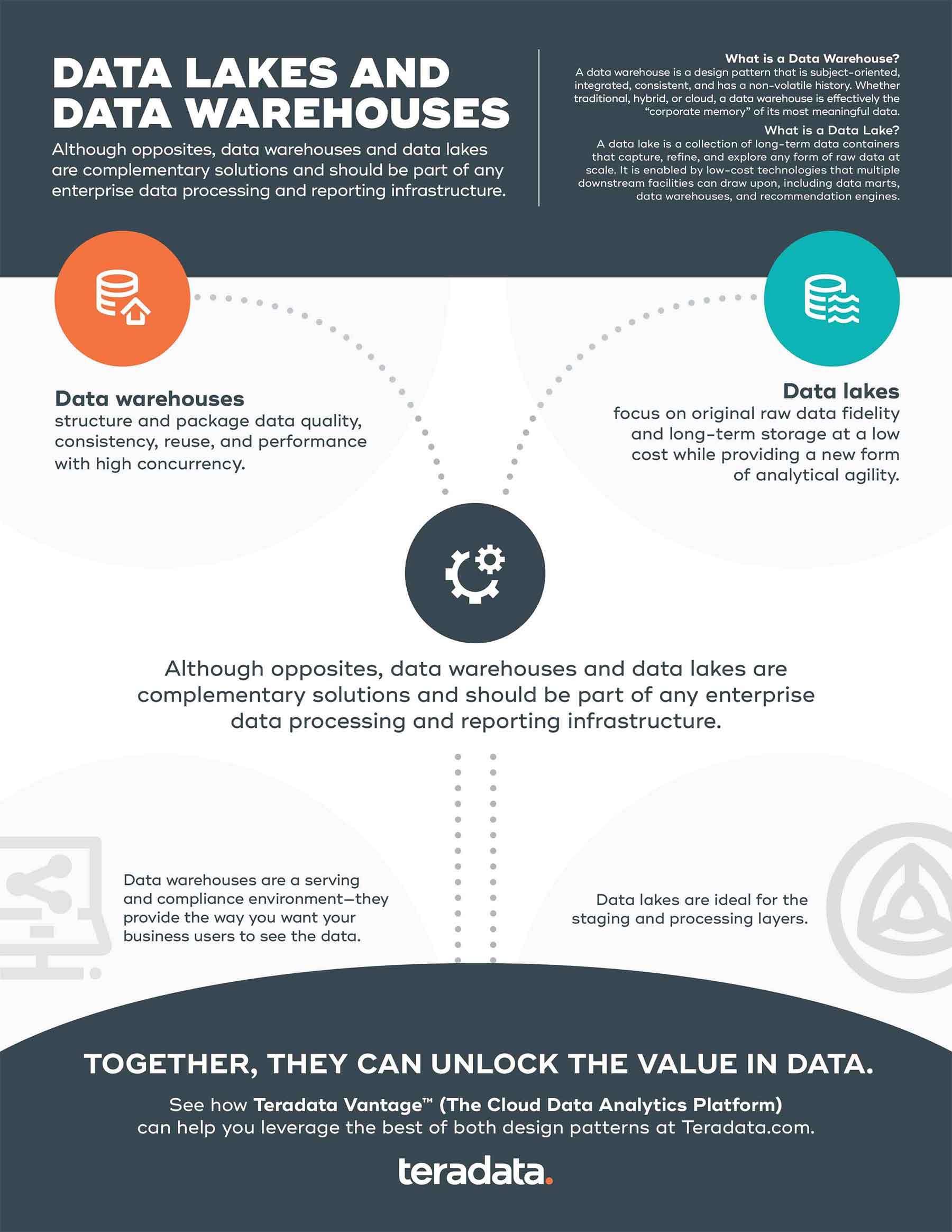Although opposites, data warehouses and data lakes are complementary solutions and should be part of any enterprise data processing and reporting infrastructure. Read our infographic to see how they work together to unlock more data value for your business needs.
What is the Difference Between Data Warehouses vs Data Lakes?
A data warehouse is a design pattern that is subject-oriented, integrated, consistent, and has a non-volatile history. Whether traditional, hybrid, or cloud, a data warehouse is effectively the “corporate memory” of its most meaningful data.
A data lake is a collection of long-term data containers that capture, refine, and explore any form of raw data at scale. It is enabled by low-cost technologies that multiple downstream facilities can draw upon, including data marts, data warehouses, and recommendation engines.

How They Work Together
Data warehouses structure and package data quality, consistency, reuse, and performance with high concurrency. Data lakes focus on original raw data fidelity and long-term storage at a low cost while providing a new form of analytical agility.
Although opposites, data warehouses and data lakes are complementary solutions and should be part of any enterprise data processing and reporting infrastructure. Data warehouses are a serving and compliance environment—they provide the way you want your business users to see the data. Data lakes are ideal for the staging and processing layers.
Together, they can unlock the value in data. See how Teradata Vantage™ (The Connected Multi-Cloud Data Platform for Enterprise Analytics) can help you leverage the best of both design patterns.